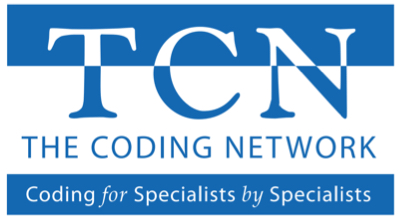Navigating the complex labyrinth of HCC coding is a daunting task for healthcare providers due to the frequent carrier changes to rules and regulations, and non-compliance could mean substantial revenue loss and hefty fines. In an era where healthcare services are under financial pressure like never before, unsurpassed accuracy in HCC coding has become an operational necessity. In this blog post, we will guide you through effective strategies to maintain compliance, minimize risk exposure, and safeguard your revenue in the volatile landscape of HCC coding. Hold on tight as we dive into the realm of Hierarchical Condition Categories and their profound impact on the fiscal health of your healthcare establishment. The future of your medical practice just might depend on it!
Healthcare providers can mitigate revenue loss and minimize the risk of fines in HCC coding by ensuring accurate and complete documentation, staying updated on coding regulations and guidelines, conducting regular training for providers and coders, and implementing a robust accuracy monitoring system coupled with risk score documentation training. By following these best practices, providers can enhance coding accuracy, and compliance, and ultimately preserve their revenue generation while avoiding potential penalties.
 HCC Coding: Navigating the Complexities
HCC Coding: Navigating the Complexities
Navigating the world of healthcare coding can be a challenging endeavor, especially when it comes to Hierarchical Condition Category (HCC) coding. HCC coding is a specialized and intricate aspect of medical coding that requires expertise and attention to detail. It involves assigning specific diagnostic and condition codes to capture the severity and complexity of patients’ chronic conditions.
Consider a patient with diabetes who also has complications such as kidney disease and neuropathy. Proper HCC coding would not only involve assigning codes for these individual conditions but also accurately capturing their interrelated nature, which can impact the risk adjustment factor (RAF) and subsequent reimbursement.
The complexities of HCC coding lie in understanding the intricate guidelines, documentation requirements, and clinical knowledge necessary to appropriately assign codes. Additionally, ensuring compliance with evolving regulations and staying updated on coding changes can add further layers of complexity.
Now that we have glimpsed into the intricate nature of HCC coding, let’s explore its crucial role in healthcare revenue.
Role of HCC Coding in Healthcare Revenue
Accurate and thorough HCC coding plays a vital role in healthcare revenue generation by impacting risk-based reimbursement models such as Medicare Advantage plans. These models utilize HCC codes to determine reimbursement rates based on patient risk profiles and expected costs for providing care.
By properly capturing and documenting all relevant chronic conditions, HCC coding ensures that providers receive appropriate reimbursement for the level of care required by their patients. Inadequate or incorrect HCC coding can result in significant revenue loss when the documented conditions fail to accurately reflect the true complexity of a patient’s health status.
Properly executed HCC coding provides financial stability for healthcare organizations by enabling accurate reimbursement for the resources utilized in caring for patients with complex medical needs. It allows providers to allocate resources effectively, invest in quality improvement initiatives, and ultimately deliver better patient outcomes.
For instance, let’s say a healthcare organization accurately identifies and codes all the chronic conditions of its patient population. This comprehensive approach increases the RAF score for the organization, resulting in higher payment rates that reflect the true costs associated with managing complex patients.
Impact of Incorrect HCC Coding
Accurate and compliant Hierarchical Condition Category (HCC) coding is crucial in the healthcare industry. Failure to code correctly can have significant financial implications for healthcare providers, resulting in revenue loss and potential fines. When HCC codes are assigned inaccurately or omitted altogether, it leads to underreporting of patient complexity and misrepresentation of the resources needed for their care. As a result, reimbursement rates may not adequately reflect the actual cost of providing care.
Imagine a patient with multiple chronic conditions that require ongoing medical management and specialist visits. If these conditions are not properly coded, the patient’s risk score may be lower than it should be. Consequently, the healthcare provider may receive less reimbursement for the services provided, which ultimately impacts their revenue.
Moreover, incorrect HCC coding can also impact population health data and quality metrics. Accurate coding helps identify high-risk patients who require earlier interventions and targeted care management. When HCC codes are incorrect or missing, it can lead to skewed data and hinder efforts to improve patient outcomes.
Compliance Measures for HCC Coding
To avoid revenue loss and fines associated with incorrect HCC coding, healthcare providers must prioritize compliance with coding guidelines and regulations. Here are some essential compliance measures to consider:
1. Annual Reporting of Active Diagnoses: It is crucial to report all active diagnoses annually based on thorough documentation during each encounter with the patient. Properly capturing all relevant diagnoses ensures accurate calculation of risk scores and appropriate reimbursement.
2. Coding All Coexisting Conditions: Healthcare providers must code all coexisting conditions at the time of encounter to provide a comprehensive picture of the patient’s health status. This includes capturing both acute and chronic conditions that influence the patient’s overall healthcare needs.
3. Documentation Support: Accurate documentation that supports reported diagnoses is vital for compliance. Providers should ensure that medical records clearly reflect the patient’s condition, including the severity and level of complexity.
4. Highest Level of Specificity: Coding to the highest level of specificity is crucial for accurate risk adjustment. It requires healthcare providers to accurately code diagnoses, utilizing the most detailed ICD-10-CM codes available.
By implementing these compliance measures, healthcare providers can minimize the risk of revenue loss, fines, and inaccurate representation of patient complexity. Compliance not only supports accurate reimbursement but also promotes better population health management and improves patient outcomes.
- Research from 2020 highlights that incorrect medical coding, including mistakes in HCC coding, can cause up to a 12% loss in potential revenue for healthcare institutions annually.
- A recent report by CMS (Centers for Medicare & Medicaid Services) found that around 58% of claims were incorrectly coded which led to an overpayment of $450 million, exposing these healthcare providers to heavy fines and penalties.
- According to a study in JAMA Network Open on Medicare Advantage Plans in 2019, there is about a 16% rate of upcoding errors leading to increased scrutiny and possibility of penalties for the providers involved.
Understanding Medicare Reimbursement Procedures
Medicare reimbursement procedures play a pivotal role in determining the financial stability of healthcare organizations and practitioners who participate in the program. To prevent revenue loss and fines in HCC coding, it is essential to have a clear understanding of how Medicare reimbursements work.
Medicare reimbursement for HCC coding follows a hierarchical structure based on specific payment models such as Medicare Advantage (Part C) or Accountable Care Organizations (ACOs). Providers must ensure accurate documentation of medical conditions and diagnoses that justify Hierarchical Condition Category codes associated with each patient’s health profile.
In an ACO model, providers are rewarded for improved patient outcomes and cost savings. Effective HCC coding can positively impact the risk adjustment factor (RAF) score, which is crucial in determining the reimbursement amount. By accurately documenting chronic conditions and ensuring proper code assignment based on comprehensive medical documentation, healthcare organizations can maximize their eligible reimbursements and avoid unnecessary financial penalties.
Understanding Medicare reimbursement procedures empowers healthcare organizations to navigate the complex landscape of HCC coding compliance successfully.
Preventing Revenue Loss and Fines in HCC Coding
HCC coding compliance is of utmost importance in healthcare to avoid revenue loss and potential fines. The U.S. Centers for Medicare & Medicaid Services (CMS) takes charge of managing and overseeing healthcare programs, making it crucial for healthcare providers to adhere to their guidelines and regulations. Failure to do so can result in significant financial penalties.
Proper documentation and accurate coding are paramount in maintaining compliance. Healthcare providers should ensure that their coding practices align with the requirements set forth by CMS. This involves a thorough understanding of the HCC coding system, including the use of appropriate ICD-10 codes, which CMS provides mapping resources and software for.
Regular audits by independent outside experts, as well as a program of ongoing internal reviews can help identify any gaps or errors in coding practices, enabling organizations to address these issues promptly. By implementing internal checks and balances, healthcare providers can proactively minimize the risk of revenue loss and potential fines.







